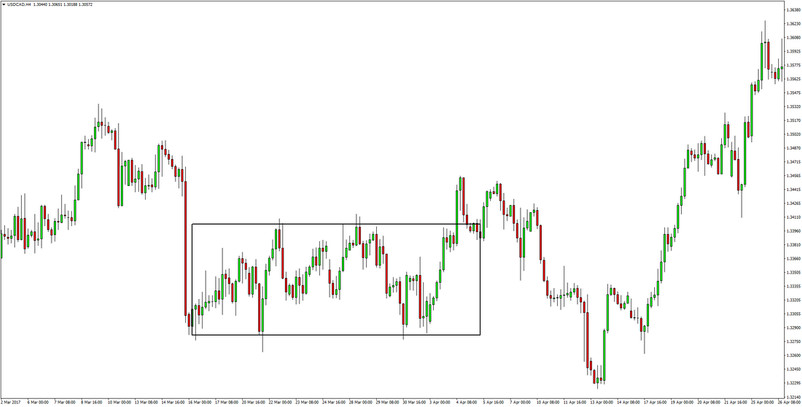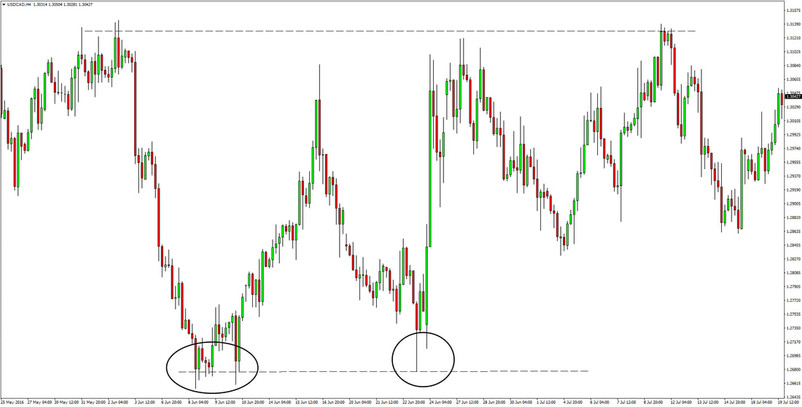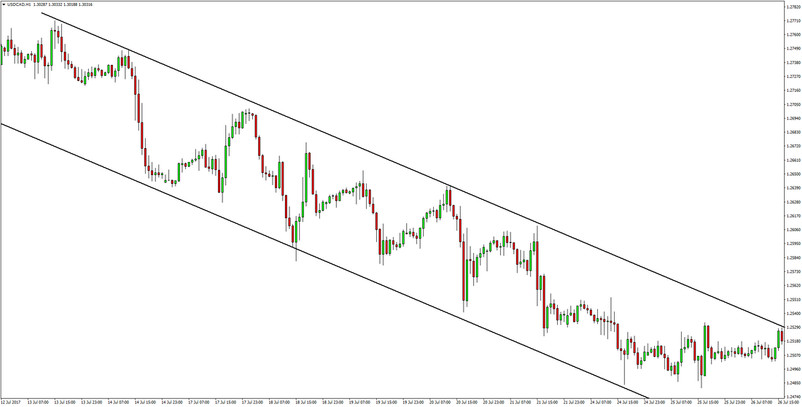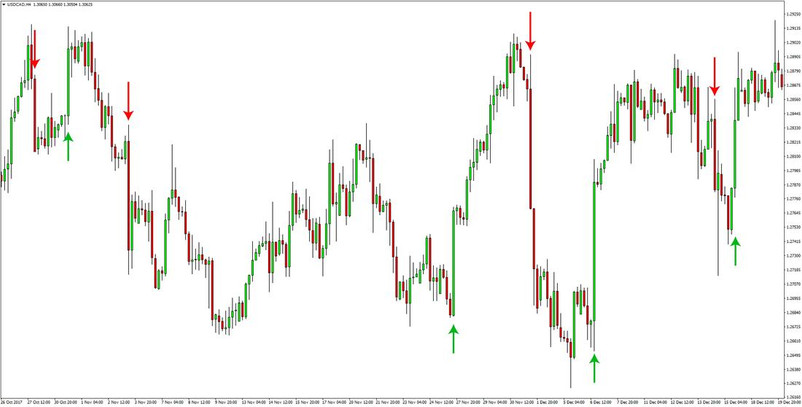USDCAD is another commodity currency pair that we will review in our series on the behavior of price action of the different Forex pairs.
General characteristics of USDCAD
Widely known as the Loonie Dollar, CAD is also displaying the characteristics of a commodity related currency and is therefore usually driven by movements in commodity prices, mainly oil.
While related to a large degree to the other commodity currencies (such as AUD and NZD), the Canadian Dollar tends to behave in a rather different manner on the charts compared to the Aussie and the Kiwi Dollars. One of the reasons for that probably has to do with the fact that, first of all, the Loonie Dollar is primarily correlated with a different commodity (oil) compared to metals and dairy products as is the case for the Australian and New Zealand Dollars.
But, additionally, the Australian and the New Zealand economies are closely linked to each other on a trade basis as the two countries do a lot of trade between each other and as a result, their currencies are also intrinsically closely correlated. However, the largest trading partner of Canada is the United States and from this aspect , the Canadian Dollar also has some positive correlation with the US Dollar. This largely explains the slow and rangy price action that can be quite commonly seen on the USDCAD pair, as is often the case with pairs comprised of currencies that are closely correlated.
Price spikes in both directions are common on USDCAD. Unlike what is usual for most other currency pairs where a large candle indicates strong momentum, on USDCAD these can be often completely reversed. The smallest candle indicated with an arrow on the above chart is about 60 pips tall, while the biggest one is a whopping 150 pips - USDCAD 4-hour timeframe
USDCAD price action
Like its commodity-related cousin currencies, namely AUD and NZD, the Canadian Dollar also often forms channels across its different timeframes. A key difference between CAD compared to AUD and NZD is that the price action on USDCAD is generally not as orderly as on AUDUSD or NZDUSD.
Irregular price moves can be quite frequent on USDCAD The price often tends to move in a rhythm of large candles (price spikes) followed by small candles and then another large spike. However, it doesn’t mean that the USDCAD pair is often trending. In fact, the price spikes can quite frequently go in both directions right next to each other – making it rather troublesome for technical analysts to determine the right direction of the pair (see the first chart above). This also makes USDCAD somewhat unsuitable for trading some strategies, like for example, breakout trading.
Trading breakouts on USDCAD can be frustrating as often times a breakout turns out to be a plain fake breakout. The USDCAD pair is probably one of the most unreliable major currency pairs when it comes to trading breakout strategies. Situations, where the price breaks out above or below an important technical area, are highly inconstant and, instead, very often fake outs are a reality on the charts of the USDCAD pair.
Of course, while breakouts can certainly offer good trading opportunities even on USDCAD, the chances of it turning into a fake-out are rarely worth the risk. It is better to seek extra-confirmation whenever a breakout on USDCAD occurs as a way to confirm the validity of the breakout before looking to enter a trade.

While the breakout above the rectangle area might normally seem like a great trading opportunity, it’s not quite the case with USDCAD. Not only it was a fake-out, but the pair also returned in the range afterward and then broke below the support (in a way, a double fake-out) before finally turning higher again. USDCAD 4-hour chart
So, if breakout trading is not the best option for USDCAD, let’s see what the best ways to actually trade this pair are.
Trading USDCAD:
Long trade entry:
- Trading channels and support/resistance zones seem to be among the best trading tools/strategies for the USDCAD pair.
- So entering long at support trendlines can offer good trading opportunities. But, the fact remains that sometimes a specific trendline will be broken before the support holds, and this can make it challenging to trade USDCAD on a purely technical basis.
Long trade stop loss:
- It’s best to allow a good amount of breathing room for the stops as support and resistance tend to work more like zones rather than precise levels on USDCAD.
- Due to the common spiking price action, placing stops can be tricky on USDCAD. Particular because of the frustrating experience of the market grabbing your stop and then taking off higher without you.
Long trade exit and targets:
- It’s best to place targets at important technical resistance areas such as previous major highs, Fibonacci extensions and even key round numbers.

Ranges can offer good buying opportunities at support areas. The typical large candles (spikes) followed by small candles can also be seen on this chart - USDCAD 4-hour timeframe
Short trade entry:
- Look to sell on completed bearish signals at resistance zones or falling resistance trendlines if the price is trading inside of channels.
Short trade stop loss:
- Look to place stops above the upper range of an important resistance zone. The price may often rise to test pivot points or round numbers before finally reversing on a resistance zone, so it’s important to allow “breathing room” in the stops.
Short trade exit and targets:
- Look to target support zones such as important previous lows on large timeframes, Fibonacci confluence zones or round number price levels.

Channels form frequently on USDCAD, so selling at the channel's resistance can also be a successful strategy. Instances of tall candles in one direction followed by tall candles in the opposite direction (as retracements) are also evident in this downtrend here – USDCAD 1-hour chart
Common behavior of USDCAD on the charts
Large price spikes caused by news releases are common on USDCAD also. However, it’s also not rare for those spikes to be completely reversed in the opposite direction after a short period of time. Such reversals of tall spiking candles can even represent major highs or lows even on large timeframes and hence momentum trading strategies based on such patterns seem to be rather unsuitable for trading USDCAD.
While channels do form frequently, they are rarely distinct with clear-cut support and resistance trendlines, as is more so the case on other currency pairs (e.g. AUDUSD and NZDUSD). Rather the trendlines often tend to be overshot by the price.
So, in this regard, it is probably better to only view such chart formations as approximate guides for where the market is generally headed rather than clear levels to take trades. Because many times on the USDCAD pair, placing a stop behind the resistance or support trendlines can result in the stop being taken out and then the market continuing in the desired direction – usually resulting in big frustrations for the trader.





